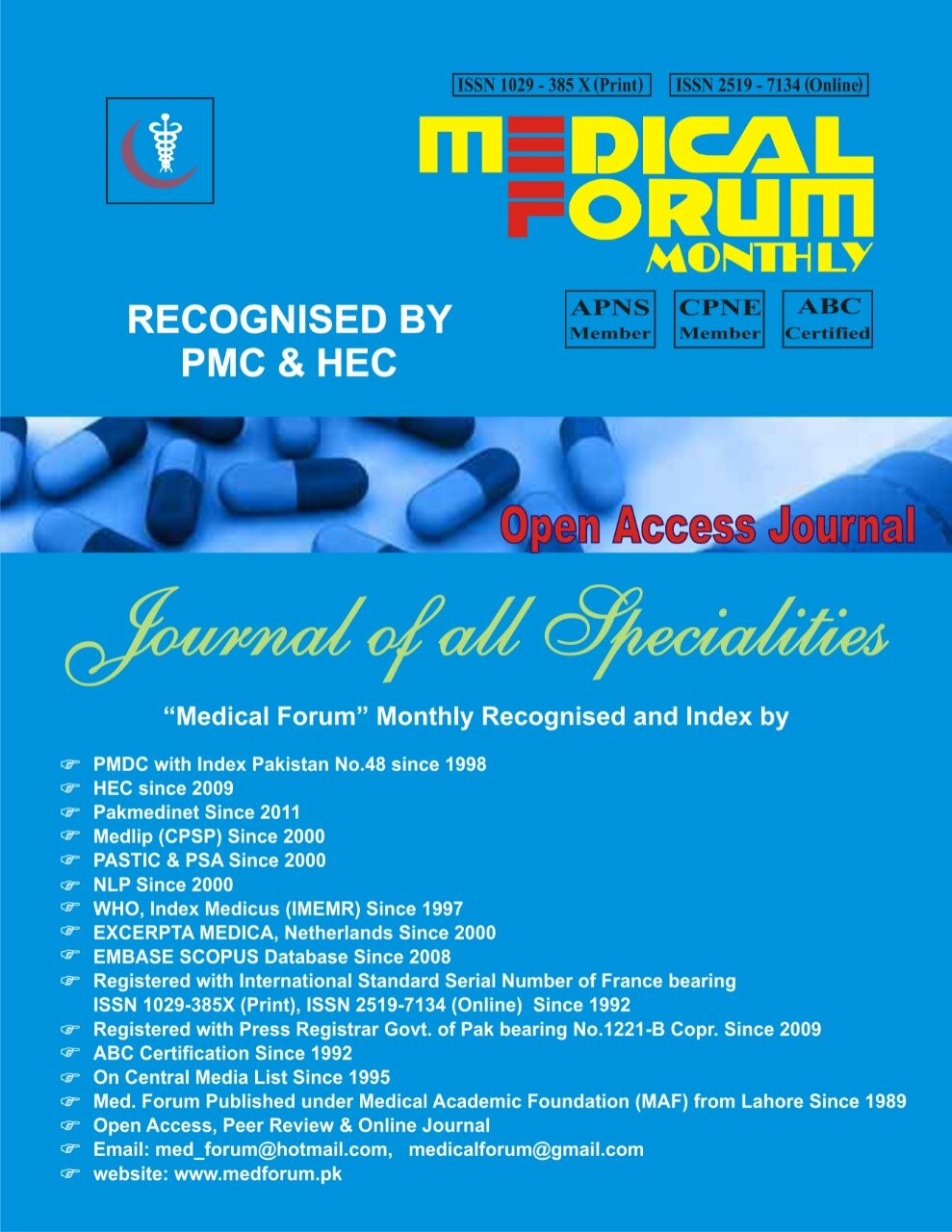
13. Histological Changes in the Extracellular Matrix of the Human Placenta Complicated by Diabetes
Histological Changes in the Extracellular Matrix of the Human Placenta Complicated by Diabetes
Muhammad Qaseem1, Nighat Ara2, Farooq Khan3 and
Saad Ahmed Idrees4
ABSTRACT
Objective: To analyze the possible changes in placental histology and Altered deposition of ECM molecules and changes in the morphological organization of the spongiotrophoblast layer might alter the microenvironment of the placenta, leading to developmental abnormalities in the offspring of diabetic mothers.
Study Design: A case-control study
Place and Duration of Study: This study was conducted at the Department of Anatomy with the collaboration obstetric department Nowshera Medical College, Nowshera from 05 Jan 2023 to 05 March 2023.
Methods: A total of twenty pregnant women were included in this study, 13 in the diabetic group and 7 in the non-diabetic (control group) Placentas of full-term pregnancy were collected from the Labor Room and Gynecology operation theatre of QHAMC (Qazi Hussain Ahmed Medical Complex). Immunoperoxidase staining was used to determine the expression of ECM components proteoglycans (decorin and biglycan), fibronectin, and laminin.
Results: Twenty patients were included in this study, and the mean age of participants was 29.5 ±4.2 years Statistical analysis showed that maternal diabetes significantly influenced the localization of ECM proteins in placental tissues. Fibronectin deposition within the labyrinth layer was significantly greater in diabetic mothers at full-term gestational ages examined (Figure 1; p < 0.01). Disorganization of the ECM may have consequences for maternal-fetal nutrient exchange by abnormal fibronectin deposition. There were no significant differences in the distribution of decorin or biglycan between diabetic tissues compared with control tissues (p > 0.05). Laminin distribution was not changed in diabetic placentas but appeared decreased at term with the labyrinth nodular region near the umbilical cord where nutritional interchange occurs demonstrating simple regression (p = 0.08).
Conclusion: Our results indicate that the changes in ECM organization and fibronectin expression found that diabetes alters the microenvironment at the maternal-fetal interface, leading to developmental abnormalities in the offspring born from diabetic pregnancy. This insight is important to devise methods for the prevention of negative pregnancy outcomes due to diabetes. Future research should be conducted to examine the mechanisms underlying these associations and explore possible therapeutic interventions.
Key Words: Maternal diabetes, Placentation, ECM Fibronectin
Citation of article: Qaseem M, Ara N, Khan F, Idrees SA. Histological Changes in the Extracellular Matrix of the Human Placenta Complicated by Diabetes. Med Forum 2024;35(7):57-61.doi:10.60110/medforum.350713.
